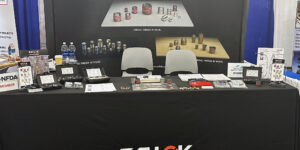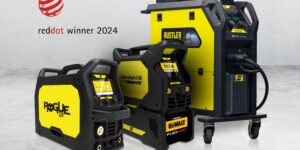The Paper Tiger
Talk about thinking outside the Box. Check out this new way for engineers to come back-to-basics in their approach to part design.
Posted: September 5, 2008
Lean manufacturing is a term well known throughout manufacturing companies across the U.S. and around the globe. A key principle of lean manufacturing is the elimination of waste, which often requires convincing those involved in a particular process to get away from the "that's the way we've always done it" mindset and open their minds to a new approach that will reduce cycle time, improve throughput and ultimately increase profits.
This type of thinking should not be limited simply to those who produce the parts. The fact is that eliminating waste right from the start ? in the design phase of part production ? builds a foundation for further cost savings later in on in the production process. When a part is designed for more efficient production from the start, the lean process is a given. Changing the way design engineers approach part design can have a major impact on production processes and the bottom line. One sheet metal design course now offered takes on the challenge of getting design engineers to think outside the box.
BACK TO BASICS
At first glance, the teaching method used in this sheet metal design course appears to be almost ridiculously simplistic. However, a closer look reveals the creativity of the approach. Upon entering the classroom, participants quickly realize that all of their favorite tools have been taken away from them. There are no computers, drawing boards or desks for participants to use. These traditional tools are replaced with sheets of paper, scissors, adhesive tape and a conference table.
Paper serves as simulation for sheet metal in the class. It has many sheet metal-like properties, such as the ability to be cut, bent or joined. Using paper enables the class to work with real 3D models instead of drawings.
REAL-LIFE EXAMPLES
Anyone who has ever participated in a lean manufacturing workshop knows there is almost always resistance from some participants at the onset of the project. The same situation exists when attempting to redesign parts. To help get participating design engineers on board, real customer parts are used in the class. This brings a "real life" aspect to the class, where participants can see first-hand the impact part redesign can have in an every day situation ? namely, their own company's parts.
Experienced designers armed with tools often synonymous with a first-grade art class analyze and redesign an existing part to save cost, improve manufacturability, increase functionality, reduce part weight and, in some cases, add value in an entirely new way. Ideas on how to redesign a specific part are represented in paper models. The models are collected and then evaluated.
Rarely does the new design come from a single star engineer in the class that has come up with a perfect solution for everything. Instead, the chosen design is usually a combination of several designs. Sometimes the best ideas come from people who are not even trained engineers. The paper models that contribute to the new part design are transferred into CAD and later programmed to be produced on CNC machines.
REDUCTION OF COSTLY PROCESSES
Believe it or not, many current parts in existence that are now being used were designed twenty or thirty years ago. Their design has not been adjusted to take full advantage of new machine capabilities and technologies.
In the past, designers developed parts out of single components that were then welded together. Many of these "old fashioned" parts are still around today. Welding requires highly skilled technicians and is labor intensive, making it an expensive process. Effective, more cost efficient technologies now exist that can replace welding in part production. Therefore, one of the first steps in the redesign process involves attempting to eliminate the number of single components within a specific part.
This usually means eliminating a weld and replacing it with a bend. Figure 1 shows a part with a number of bends that have replaced welds used in a previous design. In most cases, the number of welds is reduced by 50 to 80 percent during the part redesign process. In some cases they can even be completely eliminated. This usually results in the biggest cost savings. In addition, reducing the number of single components within a specific part can have benefits such as fewer assembly errors and fewer drawings to manage.
While the reduction or elimination of welds to minimize production costs plays an important role in part redesign, many other factors can also significantly impact a part's design, such as weight reduction, aesthetics, functionality, ease of manufacturing and the utilization of less expensive materials.
For example, with moving parts weight can be a determining factor for redesign. In most cases, moving parts perform better if they weigh less. Additionally, parts that were previously produced from aluminum (because the material is well-suited for machining) can be produced from much cheaper materials, like stainless steel, when the part is redesigned to utilize fabricating processes.
FABRICATING VS. MACHINING
The sheet metal design class works most often with parts that are already made out of sheet metal and makes them better. This is because the class is primarily taught to customers that work exclusively with sheet metal. However, it is also possible to redesign parts that were originally produced using chip cutting processes, such as milling, turning and grinding.
Utilizing sheet metal and its advantages to redesign a previously-machined component can have a dramatic impact, the most important being cost. Image 2 illustrates how a device holder from a certain machine was redesigned from original part-to paper model-to new design.
The holder was originally produced from two aluminum milled parts with an angularity of 0.1 mm. With the redesign process it was reduced to a single fabricated steel part with no welds and five bends ? and an impressive 85 percent cost savings was achieved.
Annette Doyle is the training manager for Trumpf Inc., Farmington Industrial Park, Farmington, CT 06032, 860-255-6110, Fax: 860-255-6424, annette.doyle@us.trumpf.com, www.us.trumpf.com.









